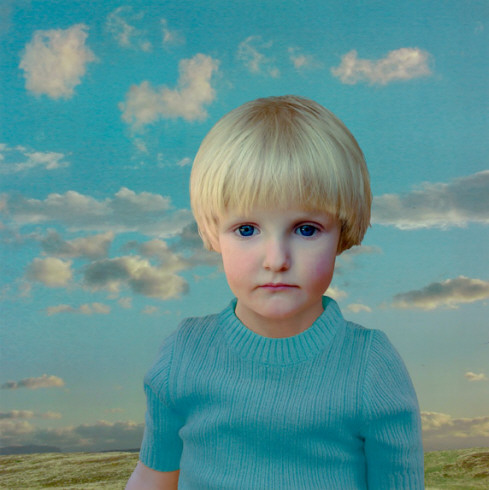
Loretta Lux
“Some said, “It is he.” Others said, “No, but he is like him.”
John 9:9
Sarah E. James, writing of Bernd and Hilla Becher’s monumental decades long project of photographing industrial buildings, all of them abandoned and all of them presented in serialized sets, creating an industrial typology, has said: “There is no narrative”. She suggests the structures are aestheticized and rendered as functionalist sculptures. Now, this is an understandable statement in a sense, because so little importance is placed on what constitutes a narrative, on understanding how narrative works. Micheal Fried has written of the Becher’s, too. Fried is always interesting, and in the Bechers he sees an ontological status to the serialized images vis a vis their differences and similarities. Now this could be said of any serialized project, of course. And Fried gets on with some nonsense about Hegel, but then he writes that the objects the Bechers photograph make intuitable the conditions of their intelligibility. And this is correct. It gives these building specificity. And the specificity is achieved only because of the typologizing. The serializing always re-focuses the specific. And it is in this refocusing that the narrative takes place. For these industrial buildings, water towers and grain elevators, and coal bunkers are never abstract. This is the paradoxical dialectic of great portraits, and these are portraits.
Now Sarah E.James later brings in Adorno, and this is very useful, and also raises questions of mimesis again. The Bechers began their project duing the de-politicized (or the pretended non ideological) Adenauer period in West Germany (which also produced a generation of terrific German filmmaking, e.g. Fassbinder, Syberberg, Schlöndorff, Wenders…though I will return to this, and that older generation returning from the US; Gerd Oswald, Siodmak, and even Lang. The Oberhausen Manifesto, which formalized the aesthetic principles of these filmmakers was written in 1962. Adenauer left office in ’63). The Bechers believed in an ideal of anti ideology. Which is, naturally, ideological itself. As Adorno said (and James quotes), after catastrophe “art takes on an ideological aspect by its mere existence’. What is significant here, or what I want to argue, is that what the Becher’s actually removed, via their attempt at removing subjectivity and ideology, was just sentimentality and kitsch politics. For what is left is certainly connected to identity, and because it is not manipulative, and not ironic, it achieves something resembling philosophy, and Utopia.
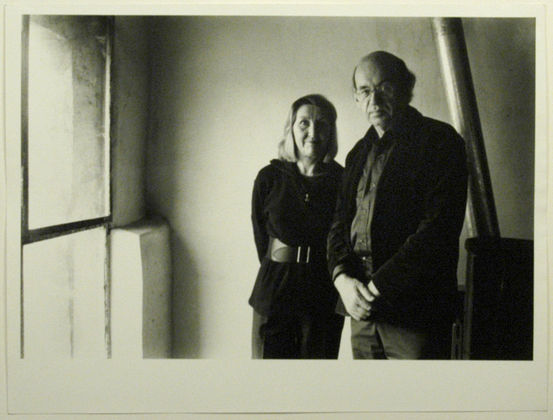
Bernd & Hilla Becher
Adorno believed in the autonomous for art, that as modernism faded or declined, and in the ashes of WW2, of Hiroshima and the Nazi death camps, that the autonomous was an agony, was deformed by the hyper instrumental thinking and logic of Western Capital, of the Enlightenment and science. What the Bechers did, from the start of their project, was to make material and specific their aesthetic, to formalize an aesthetic of stark unblinking stares. This was interrogation, was the police turning their table lamp around so the light was directly in your face. The lasting resonance of the Becher oeuvre is their resistance to documentary conceits. For within the idea of the documentary, or of documentation in culture, is the idea of Hegelian progress, of linear and/or continuous evolution of aesthetics and thought, and even of perception.

Bernd & Hilla Becher, 1981
There is something interesting in traces that go back to the influence of The New German Cinema, however one wants to define that. But the from Oberhausen Manifesto onward, the films coming out of West Germany have taken on greater resonance than earlier critiques articulated. And in one way, its probably good to seperate Fassbinder from the rest because, well, Fassbinder is a bit like talking about DaVinci and the Renaissance. Fassbinder exceeds all context. But those films from Germany feel a good deal like the Becher’s photographs. The sense of restraint and emotional hardness, gives them a quality and scope that other New Wave movements lacked.
But I dont want to do an exhaustive think on Fassbinder, but more to relate him to both what is going on in the Bechers, and more, the growing sense of blindness I feel in contemporary American culture, in contemporary American daily life.
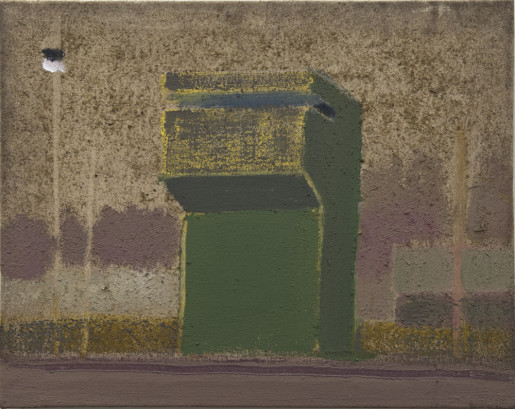
Merlin James
This is a trained blindness, and when I use the word blindness, its only half metaphor or symbol. With all normal emotions now pathologized, especially among the young, the solution lies in the opinion of scientific experts. The role of these experts; social workers or medical personel, is to find a containment solution. The first line of containment is, of course, prison. The second line, for those in not at the very bottom of the economic ladder, is psychiatric meds. Empathy is turned into a form of weakness, an obstacle to career and success. My friend Molly Klein put it this way:“Dominant class and their clerks have a tendency to pathologize socially valued affects (grief becomes ‘depression”) and vice versa (ruthless greed and callousness or sadism become ambiition and self worth).” There is a need, whether consciously planned or not, for the creation of context. This context is the homogenizing of vision. Everything begins to look, and often does look, like everything else. The mass media and culture industry promotes this by a presentation of narrative that blurs distinctions. Comedy film and TV move along at rhythm very like the rhythm of thrillers or sentimental drama. The other part of the manufactured context is to present the underclass as without any ability to self regulate. The term “jungle” is trotted out a lot, but if that word isn’t used, that is the idea behind most police drama or military/espionage narrative. Domestically its the urban underclass (black and latino) or increasingly in the new rural noir, the Appalachian or Rust Belt poor white trash. Internationally, it is the creation of a new Orientalism; starting of course with Islam, but extending to black Africa and to most of Asia. The public, meaning, really, the educated 20%, majority white, are fed a constant narrative of overcoming obstacles as the key to success. The very rich of course almost never had to overcome anything. But the narrative obstacles most often take the form of the poor. Increasingly, the poor are depicted as a Zombie horde, a violent and irrational underclass that needs direction and paternalistic guidance. But really, the deeper layer of meaning is,’dont bother with guidance, just dispose of them’. This is a new cynicism that has defined compassion as lack of ambition. Compassion is “wasting time”. In one sense it is the logical end state of instrumental thinking. Good money after bad. Those dumb ass poor just cant get it together. Wouldnt get out of the way of the Hurricane. The news features stories of babies in dumpsters, of rape and insanity. Even of cannibalism.
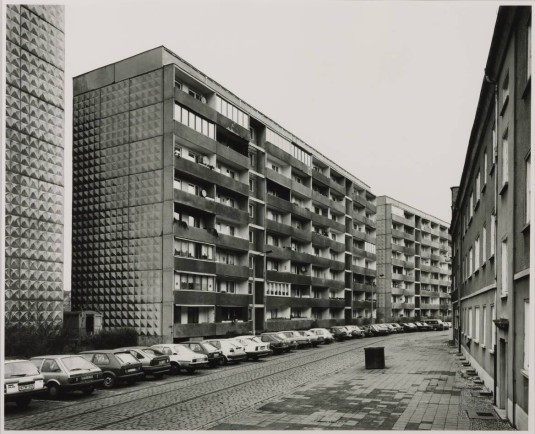
Thomas Struth, Dessau Germany, 1991
There is a confluence of discouraging compassion and valorizing competence. But competence usually is expressed as compliance. There is something, though, in the selling of these lurid (usually sexualized) tales of fear, and tales of obedience, that requires a training in how not to look. I suspect some of this connects to the constant fuzzy low resolution screen images of CCTV footage or cell phone video. The world ‘out there’ is always grainy and blurred. The underclass live in a low resolution world of limited pixels.
Ambition is a complex idea in the America of 2014. For this is society inching ever closer to feudalism, and ambition must be directed, and contains within it a certain ambivilance. Ambition is fine as a general idea, but less fine if individual. For the ownership class always preaches the virtues of sacrifice, and mainstream narratives often include working class sacrifice. It is attached to one of the more pernicious ideas the psych industry ever came up with, and that is “closure”. Closure means additional killing. This is one of those abstractions that literally has no meaning. What is being closed? Grief somehow is shut down? Because grief doesn’t work that way.

Todd Hido
Closure is foreclsure in a sense. Experts aid in closure. The grieving individual certainly wouldn’t arrive at this idea by themselves. Whenever I have heard anyone actually use this word in front of me (and outside of mainstream commodity narrative almost nobody does use it) I have always been a slightly surprised, if not bewildered. “Closure?” This is simply a manufactured designation that allows people to get back to work. Someone murders your wife….like, say, a cop, and then that cop is….well, ok, this is a fantasy, but that cop is then executed (has any policeman ever been put to death in the US?). Do you feel closure? What DO you feel? A shudder of vengeful satisfaction perhaps, which is a very shallow emotion. More grief, probably. Defeat, sadness, melancholy. Futility. I don’t know.
But back to blindess, to the stare of the dead. One of the reasons that the Bechers work retains a quality of profundity is that the viewer cannot generalize the object. For exactly because of its typology, it refuses generalization. But it is more than that; the object is cleansed of judgement. What Hilla Becher has said, that they wanted to eliminate the documentary quality. For the documentary is open to an abusive subjectivity. The very best documentary filmmakers are always priests of their craft, there seems to be an almost Quaker like austerity to their process. The Bechers stare at their object. They are clinically preserving laboritory slides, but not for any purpose beyond the aesthetic. For this raises that issue of artistic pedagogy, or rather the pedagogy of the artwork. There is no such causation, art doesnt make people behave better, or at least not directly. The endless photo essays of genocide or mass violence, shown in the safe distant confines of a gallery or museum, will tend to be little more than voyeurism. One can find similar models of ersatz sympathy in journalism today. But that is a whole other topic…so staying on message, as the White House Press Secretary always reminds us, the power of photographers such as the Bechers is to become both priest and scientist, and to withdraw from false emotion the better to discover to where genuine human feeling has gone.

Bernd & Hilla Becher, 1980
Art also implies, at its best, something of the collective, or common. I feel there is a crude model that suggests some division between seeing and doing, as if the engagement with an artwork is defacto passive. I’m not sure this is correct at all. This is why almost all “art activism” fails. As Ranciere says; “…if there is a politics of aesthetics, it lies in the practices and modes of visibility of an art that re-configure the fabric of sensory experience.” There are a host of issues surrounding all this, but thats not really the point of this posting, and is too complex to give a shorthand explication. Instead I want to return to the way in which image and vision are arranged to define class qualities and the way propaganda has enclosed discourse, and by extension the very way that vision has been affected.
The sense of missing people looms throughout the Bechers work. But it is a theme instinctivly found in much art of the last two hundred years. Isolation, or estrangement, or simply absence. The clarity in the work of the Bechers, and in their students such as Gursky and Hofer and Struth, suggests something that ruptures the insistance on the blurred life of the underclass, and the, at least, blurred indefinite and indistinct inner life of the bourgeoise. In film, the constant repetition of hand held camera (or steady cam) shots creates an artifical urgency, but also makes hazy the sense of location. Isolation is always distinct. What is missing is always, I think, in perfect focus.
For the culture industry is doing the opposite. In Speilberg or Zemakis, or Aronofsky (now referred to as sort of the new avant garde by Empire’s minions such as Jerry Stahl in a recent interview) the false creation of community, generalized but narrated as if specific, is the trademark effect. You arent really alone. I have noted recently how often 12 step meetings appear in pop culture product. Embrace your defect, its a sign of progress (and indeed I know people that this program helped…I guess). In a country with over two million in prison, the majority for non violent drug offenses, there is a strange dynamic in play. The culture of therapy asks that you admit your illness. I am an addict. Then they stigmatize you for being ill. But this idea of describing alcoholism or addiction as an illness is insidious I think. What is it, if it’s not an illness? The question of drugs seductive pleasures is a great threat to social order. Also, the notion of that all drug taking is really self medication has been tossed into the dustbin of history. Why? Because legal prescription medicating is part of the system of domination, of mediating daily life, of creating a functioning obedient work force.

Lyonel Feininger
The artifical community, created by the culture industry, is most often expressed in the new fantasy workplace. Probably the single most popular presentation of workplace comraderie is in the multitudinous versions of the CIA or FBI or local police headquarters. One would think working at the CIA was just the most fun fucking job in the world. Long distance surveillance, drone strikes on icky brown people, and hot lady agents in high heels. It is the perfect white male fantasy; well, rich white male fantasy. But it is more than that, it is the creation of a paradigm. There is no police or law enforcement agency in the world with a pleasant work space. None. Hot size 6 lady agents dont stroll around with hunky boy toy male agents, and not everyone is hyper skilled in hand to hand combat, nor do they have IQs in the 150 range. But like Wolf of Wall Street, this is the ruling class ideal. And the secondary trope buried within these faux CIA offices (or secret agencies within agencies…which is thee favorite Hollywood plot device right now) is the racism and class contempt of the ownership class, which sees danger in all third world countries, and those domestic thrid world countries such as Detroit, Oakland, or Harlen County Ky.
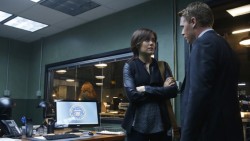
The Blacklist, NBC 2014
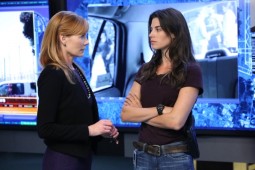
Intelligence, CBS, 2014
There is (and Jameson notes it) an important topic in this, the tension between the political aesthetic, and individual psychic histories. As Lacan emphasized, the “constitution of the subject”, that de-centering of the ego, is a useful approach to understanding how the mimetic is engaged by the artwork, and killed in its sleep (as it were) by state propaganda or The Spectacle…Hollywood film and TV largely.

William Christenberry
The manufacture of a landscape in which the underclass is seen only in the most opaque way, is linked to the symbols embedded in that underclass, such as Zombie affect and pestilence, inability to self regulate. And management is a highly valorized attribute today. The inner city is hyper violent, and there is a cynical stance toward reformers of the inner city. Usually, the social worker or inner city teacher tries, but the material to work with (poor people) just always hurt themselves. They maybe dont deserve it (top text) but they fail anyway (its their nature; i.e. subtext). The artwork that expresses clarity — a visual privileging I suspect, but anyway — is work that today seems more disruptive than that which occludes in the name of self expression. There are, of course, many kinds of clarity — even many kinds of visual clarity. Barnett Newman expressed clarity. But so did Rothko, and even Pollock I think. I am not sure the overt clarity of pop art wasnt really just slightly out of focus (to strain this metaphor). But I have the feeling that once the ironic entered onto the aesthetic field of play, things got a lot fuzzier.

Henry Tonks
Still, things are never quite as simple as I suggest. Vogue fashion lay outs reflect a ruling elite sensibility in absolute large format and perfect focus. The scientific slide, the clinical or medical drawing, how does one’s perception of these images change over time? Henry Tonks, an army surgeon in WW1, painted a number of disfigured soldiers as part of a medical project. The entire topic of portraits in fact is riven with paradox and contradiction. The blank expressions of Thomas Ruff’s photos, or the blank affectless arch acting in Chiat Day ads, or Jim Jarmusch films, has always felt regressive to me. Victorial Beercroft feels far different than Rineke Dijikstra…but maybe I’m wrong. These are all artists that at the very least raise questions. From within these encounters will come more of a grasp of historical truth and less of the bland generalized myths of Hollywood. I increasingly feel as if art has become even more important in an age so self congratulatory about its own knowledge.
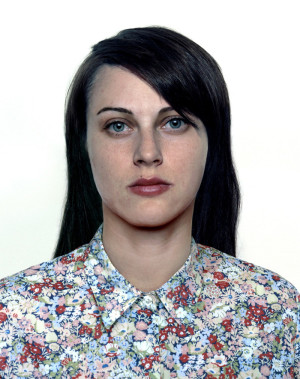
Thomas Ruff
Inside is safe, controlled. Outside is a place of maurauding poor. Hence the Zombie and post apocolypse franchises. Inside is technically controlled, air conditioned, outside is unpredicatble, hence CCTV. There are still the shadows of ancient portents and warnings that we feel when a swarm of bats rise up from their caves at sunset. We still shudder at sight of a snake silently watching us. If the kistch model of history presents only war, the unconscious traces of history will express commons and fire and collectivity in the face of darkness. For the ruling class, the ‘outside’ is ever more criminalized. And military weather projects (http://www.globalresearch.ca/weather-warfare-beware-the-us-military-s-experiments-with-climatic-warfare/7561) probably speak to this.
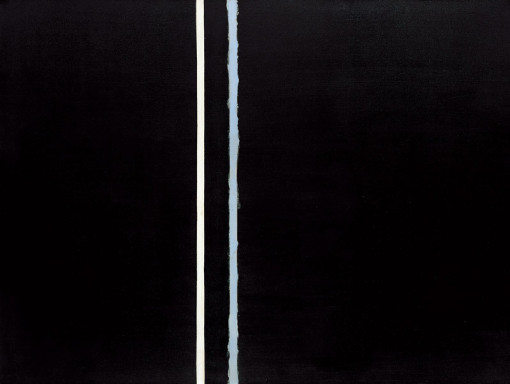
Barnett Newman
The ownership class increasingly imprints a vision on image product, and it is increasingly nakedly racist and Imperialist. White male domination has reformatted it’s narrative. The underclass, the working poor, are simply pathologized. There are logical and material cul de sacs facing the working class at teach turn. Toxic enviroments breed childhood illness, which breeds various irregular behaviors. Such behaviors fall within what was once called normal, but today is made into a symptom. Normal is a simulacra. Dress size four. Ripped abs. Perfect hair. http://www.nysun.com/style/what-in-the-devil-is-a-size-6/36225/
The pathologized poor have this image reinforced by being filmed as if they were pathogens. As if always in quarantine. Through chain link fences, from surveillance angles, or just from above. The POV is often from a position of safety. And then it is either, as I said above, grainy or simply a shadowy night shot. The once subversive darkeness of wet urban streets in 1940s noir, has become a fashion shoot locale, and if inseted into narrative it is morphed into a darkened parking garage and always a lone woman walks to her fate, nervous, jumping at each sound, and eventually realizing her worst fears.

Todd Hido
There is much more to discuss in the architecture of fear; the poetics of space that Bachelard didn’t realize I don’t think. Perhaps its more the de-poeticizing of space. But that is, I trust, next post. For now, there are clearly tendencies at work in how public space is being militarized. The city as war zone. The gated rich at at command headquaters, where foot soldiers guard the aristocracy. Class segregation is an open concept, now, and increasingly expressed nonchalantly. Narrative must find resistance through new strategies that will express the clarity, for the low grade resolution of CCTV image is reflected in the blurred babblings of much of what passes for journalism and thinking today. The language of piercing limpid transparancy is ever harder to find. A lack of focus, in thought, in architecture, in narrative. The CCTV age.

The Young Torliss, 1966 Dr. Volker Schlondorff

thanks for the Merlin James intro
Grrrreat. As a product of the millennial generation, film/tv is literature for most of my peers. Visuality in any context IS narrative. And perhaps one of the most violent forms of production has been the use of steady cams, handheld camera (which always seemed to me a way for big studios to market their films to the generation of kids who grew up with video camera’s in their own home. Blair witch project being one of the first). The loss of context is in deep focus. When all is in focus, the eye must work to discover the true meaning of the image. We must de-layer. It feels a much more compassionate method of viewing for some reason.
What’s the Victorial Beercroft reference? I wanted to chase it to see the difference but have been foiled — who are/were you thinking of there?
@george….yes, he’s good.
@jack………..its a great discussion to have, the deep focus debate. And what you say is right. There is much to look into regards steady cam, and that the effects on narrative I think.
@DP………..beecroft seems empty to me, where Dijkstra I think sort of compelling. Ive read a lot of very negative critical stuff on Dijkstra (i mispelled her name in the post I just realized)………but I find her portraits very complex and not condescending…..though I guess I can understand that complaint. Beercroft valorizes fashion, and its very twee……to me anyway. And beercroft is presenting her work very differently to different effect and with a whole other intention….to be fair.
this is so good
one thing that comes to mind also is Barthes who is usuallly kinda dopey but noticing the similarities between the realist novel and how it builds it reality effects with these little details (what kind of teapot) and fashion journalim. I think these spectacle virtual effects creating the realm of the truly human in contrast to the gritty netherworlds reaches a hheight in Bonfire of the Vanities which then became the bible of all this reactionn, Zizekian imperialism and gentrification discourse.
…
Molly: Re Barthes and Realism
But what about the realism of, say, Flaubert? Or Zola? Come to think of it, what about the realism of Ibsen, which was never really that conventional to begin with — I directed Hedda Gabler, for example, and he was very very specific and intentional with what you could call theatrical symbolism way before his “late Symbolist period” as officially reckoned by critics. Other examples include the eponymous duck in The Wild Duck, or how Ghosts ends (“Mother, give me the sun.”) Realism as a genre has never always been about minutia, or a disregard for the uncanny or the mysterious. I mean, is there anything much more uncanny or mysterious, unsettling, than the ending of Ibsen’s Ghosts? It’s like an incantation. Or Chekhov, The Cherry Orchard — again, the cherry orchard that nobody seems to want to sell becomes something else, something uncanny, that refers to something absent off stage.
What I guess I’m trying to say is that the bastardization of realism to become just irrelevance and complete disregard for anything that’s not “journalism” has to be a much narrower and much more specific phenomena, rather than Barthes’ analysis.
John: I took a look at Dijkstra’s beach portraits, but I was slightly underwhelmed. I suppose she does convey a sense of the uncanny referent, but she also seems to draw on conventional symbols — the idea of the vastness of seas, the postcard “faded” sort of vintage feel to her photographs that automatically signals “oh, time to be nostalgic here.” Almost like a cue card. I guess I don’t get it. Like this one:
http://imageobjecttext.files.wordpress.com/2012/04/rineke-dijkstra-coney-island-ny-usa-june-20-1993.jpg
What’s that flat blue-grey chrome sky supposed to mean? It looks like a PC wallpaper or a backdrop, literally — the girl could be photoshopped on to a standard-issue Microsoft Windows wallpaper and we’ll be none the wiser.
Nice inclusion of Todd Hido, though. I wasn’t familiar with him before. I enjoyed his photography tremendously. Really shows how familiar buildings and streets are like when they’re empty and still.
on portraiture and zombies,
i’d want to connect this to what yoou mentiondre molly crabapple’s guantanamo comix — perfect examples of the artwork’s intervention to naturalize torture and disrupt the purchase on reality that representations in language and visual art can have.. She says the smiley faces are “to show the censorship” but then her report is nothing but a travelogue, repeating all the press releases nd the most dubious propaganda of all – here;s the fiend who “blew up my city!’ she writes of khaled sheik mohammed -, with her pixie figure the libidinal focus of the island inserted…porn pixie in guantanamo! porn pixie in athens! assimilating everything equally as background to porn pixie’s travels alo works to create these castes
Exir, yes realism is not about the minutae; it would be some kind of impressionism however and not realism at all if there were not this produce of the effect of reality, of facsimile of reality
consider for example in the novel how characters who function as both imaginary individuals and embodiments of ideas?allegories are gradually over the late 18th and 19t century in the imperial core replaced by characters whose facsiimile quality is paramount. Ironically, it is the compelte and utter fictionality – the absence of any referential aspect, that is, the utter uniqueness that is meant to be shared with real individuals and not constitute a link from fiction to reality – that flowers as the height of realism and bridges to modernism/ I mean compare Tom Jones or Ceceilia or even Mr darcy and elizabeth bennet, who metaphorize principles etc, with Jane Eyre or Healthcliff who remain only slightly allegorical, with Mrs Dalloway who is constructed emphatically as the refusal of allegoral function, the opposite of the allehorical she is a mere facsimille of an individual who neither refers to any real individual nore represents any abstraction or force of virtue or vice or whatever. And then seeing this development, or evolution, or deevolution, in striingly formulaic narratives, we ask how then is the realism effect built concretely? How are these effects of allegory, then of the symbolic with mimetic and allegorical valences (bovary), versus the effects of facsimile or simulacrum, produced? the presence of the uncanny i think can harmonize with realist presentation of character though we dont call this realism (but stephen king would be the perfect example, or in film Close Encounters)…
OK, so I suppose you’re talking about a very recent (relatively speaking) and very specific phenomena. I’d agree completely, then. I’d add the use of “found footage” and documentary style “gritty camera work” in most TV nowadays. The complete hiding of any coherent “mediated” style for something that gives the illusion of artlessness.
yeah, remember also the Austen Powers style implausible media exhibits in Colin Powell’s wmd presentation at the UN — staticky audio, grainy pics; it was to suggest a kind of authenticity because it evoked certain fictions; all the attendees pretended not to know about common spy satelites
Doesn’t Mrs Dalloway represent a kind of isolation, though? The essential existential solitude of the human being. The way you can never really understand your society, or even your closest friends? Woolf was well versed in classics, and in Greek tragedy the protagonist is always a cypher, so you could say Mrs Dalloway is a tragic figure.
“How are these effects of allegory, then of the symbolic with mimetic and allegorical valences (bovary), versus the effects of facsimile or simulacrum, produced?” Don’t we see this process repeated multiple times through history, though? Aeschylus was most allegorical, culminating in the blatant propaganda of The Eumenides. Then Sophocles was more humanistic. Finally you have Euripides, where he brings the “abstract” archetypes of the gods down to earth as human beings with human foibles and petty attachments to petty passions.
Or you have Marlowe –> Shakespeare — Marlowe’s tyrants represent an abstract will to power, Shakespeare’s is much more “realistic”, if you will, of its mimesis of psychology. Hence The Jew of Malta becomes Shylock, and Faust becomes Hamlet. Of course he doesn’t fit the pattern exactly as his last plays moved drastically back to the allegorical. I think King Lear can lay claims to being Shakespeare’s greatest work as it lies between the two poles of allegory vs realism.
@Exir, You must stop asking questions like “what does that mean”./ Thats first. Thats just so the wrong way to enter into this. I dont want to go to the mat defending Dijkstra; but one could use that tactic with anything….oh, look at that Matisse…whats that red window…whats that supposed to mean? You have to approach the whole is greater (or not) than the sum of the parts. And work back, if you must. There is a feeling, a sort of choice of subject, and a neutrality to Djikstra….i always find somewhat moving. Its also deconstructing fashion in a sense., I always feel she is subtracting and deconstructing certain conceits of post modern photography.
Oh that melville…whats he doing with the vastness of the seas….yawn.
@Molly; and exir i guess. I see the production of a “realism”, a specific sort of realism as happening …well, more acutely since WW2….but the realism of 19th novels was different. jameson is so good on this, moretti too. But there you had this idea of narrative, and that took place within a world of plasubility. By the mid 20th century, there was another ideological engine to the production of realism. There was a manufacturing of effects…..realism effects. Cues, or signifiers, or whatever. Hollywood film works in within a total system of signage. If you carry a bag of groceries, we know that because a bagette is sticking out of the top of it. But thats a crude example. The real becomes linked to an idea of personhood….and thats the tricky and very complicated part of it. The message was, we are duplicating reality here. Of course thats nonsense because nobody knows what that is, vis a vis language. Is Juan Ruflo realistic or Highsmith or Robbe Grillet? Is dostoyevsky? Well, are of them are on one level, but the production of this one sort of official idea of realism, is the one without allegory or the uncanny, or any disruption is the reinforcing of status. Of human stagnation. Of human slavery as the status quo.
there is another element to 19th century realism…..at least in the novel, and that is memory. Now how that works in painting is an interesting question. I dont know. But in the novel, Proust….to Tolstoy even….there is an appeal to memory, and a sort of sensory reverie. Its not really dreamlike, for that becamse expressionism in some sense. Gothic novels…Melmoth the Wanderer i love…but i digress….or Maldaror….and up through Dickens….memory is recalling a tale, a narrative, and it is always enclosed or linked to a group, to the commons somehow. In the 20th century you have the realism of NO memory, or amnesia. Camus….mother died yesterday, or the day before. On through all the rest. They are narratives of forgetting I think. And realism is not sustainable as an aesthetic idea if you cant remember, and so the realism, the manufacture of realism was pre fabricated more. Easier to sort of place together even if you have partial aphasia.
‘You must stop asking questions like “what does that mean”./ Thats first. Thats just so the wrong way to enter into this. You have to approach the whole is greater (or not) than the sum of the parts. And work back, if you must.’
OK, in context, it was a rhetorical question. I was in fact making a point that I do not feel the whole is very satisfying. That the too-even chrome feel of the background gives me nothing except a standard kind of smoothed-out beauty. Hence the way it reminds me of PC wallpapers. It feels like a pretty background to put subjects in front, and so the background makes the “neutral” subject anything but neutral in reality. I think the photographs are as loaded as can be.
I know this is terribly subjective and I can definitely see what you like about the photographs — but that line, taken out of context, doesn’t actually represent the way I’m actually approaching my criticism of the photograph.
“Oh that melville…whats he doing with the vastness of the seas….yawn.” I’d be the first to defend Melville to the hilt. In the novel the seas is an environment that the narrative actively engages in, and the struggles are made concrete into the form of a whale. Now that is a very potent, singular, and unified image. I think the sea here, because it is a VISUAL backdrop, functions very differently. My contention is that it functions as a sort of shorthand, visual cliche — like you said, baguette = grocery. Nicely framed picture = happy suburban family with 2.5 kids. Glasses = nerd who will look attractive with a makeover. (In this case, unremarkable subject + vast sea as backdrop = depth and profundity)
Agreed with progression of realism, it does fit all the trends in the arts. My question is, though, that aren’t allegorical works just as easily used to suppress and erase the uncanny? I’ve always found medieval mystery plays to be unreadable. I’m sure they had deeply felt meanings to contemporary audiences, although that doesn’t mean much, because it could simply be a sentimental and socially conditioned response rather than anything involving the uncanny. But at the core, the medieval mystery plays had no mystery — all values were set from the beginning, you had a rigid set of referents whose meanings you know through training (by seeing the motifs recurring in religious iconography, for example, or through hearing the story not just retold constantly in sermons, but always interpreted one way), and those never varied. Basically, an iconographic texture. And I’ve always thought that the enemy of the uncanny is basically anything that is iconographic. Because it is the opposite of a dynamic meaning. For example, Shakespeare’s use of imagery at its most powerful is never iconographic — where’s the iconography behind mad Edgar leading Gloucester over an imaginary cliff? Or King Lear’s last request, which is something as mundane as asking “pray undo this button”? Or his last words, “look there! look there!” That’s just in one play. These are all moments that conceal the uncanny because they don’t have a fix iconographic meaning — there’s nothing in undoing a button, or in looking at a certain spot, that tells you beforehand what its significance is, it only has meaning in context in the precise moment
Well, I dont think the backgrounds in Dijkstra are generic is the problem. And then, what does one say about Avedon or Disfarmer or Ruff? Three different photogs who feature portraits? I mean, you really have to ask what it is your critiquing. One might ask what portraits are for. Sir John lavery for example, or Bastien Lepage.. who are totally different painters, but both did portraits. Or Gainsborough…..or Roger ballen a south african photograher….or sammy fasso. I mean these are all quite different approaches. Is Avedon’s background generic? The white a cliche>? All portrait photographers create a context that forces you to look at the subject of the portrait. So the question becomes, what is the role or value of the portrait? Djikstra works with adolescence as a subject, a lot. Finding those border regions between ages….puberty etc. Which i find quite compelling in ways. But….the ocean is never not singular per se. So, im not sure why her seas are generic. But….im not going to the mat as i say, I dont think she is a major artist. But i think she’s good in the very way Beercroft is bad.
Now, per iconography or the uncanny. THis is just too reductive. Firstly, the mystery plays did have mystery, but that mystery wasnt generated through character conventions we are used to today. I think people have an incredibly hard time not coming from this idea of character as we’ve known it since Ibsen maybe. On stage anyway. What was set in the mystery plays was the moral. They were like Kathakali or something. I mean Ive always wanted to direct a series of mystery plays. DeGhelderode was interested in them I remember. What of Noh drama? Or kabuki? So its the meaning you know through training….its the moral message, the instructional point or something. Everything is always a comment on its own form. What of Sophocles? I mean, Noh drama operates within strict ritual performance laws. You carry out the ritual. Like caligraphy. Ozu is like this. Bresson, too, in a different way. The same gesture….but perfected. We psychologize this stuff a good deal today. As if the meaning were to be found by peeling away the skins ……truth as an onion or something. And in fact, there are other truths. In repeating the same gestures and recitations you create something else; the meaning resides now in the interstices of same. Sufi music …..or actually even a lot of Indian music, operates differently than Beethoven. Or Coltrane. That is not predicated on the same principles as Bach or mozart. So…as for iconography….im not sure how you are using the word. The mad tom scene…read Jan Kott on that scene. Beckett obviously borrowed that scene in a variety of ways….but that one scene is the birth of modern theatre probably. For the truth of that moment can only be expressed on stage. So i agree about the specificity with shakespeare…..and its the language…..i really think the opening scenes, the ones he wrote, in Two Noble Kinsman is the most radical english ever written maybe..,..but its the slight shifts he instinctively used in dialogue…from prose to poetry and back…etc . But when you say where is the iconography in tom leading the old man to the cliff edge……Im not sure thats the most valuable approach here. Where is the iconography in any number of scenes that are bad scenes. I do think that exposition is a big topic. I saw a film yesterday i will write about..Mister John…a sort of masterpiece really. Made by an Irish couple with aiden gullin……set in singapore. Very simply narrative…..so elliptical as to evaporate….but its profoundly moving for some reason. A brother goes to tidy up affairs in singapore after his older brother had died. Nothing happens, except his own world view of himself slowly falls apart. What keeps that film from becoming melodrama would be a great topic if I were still teaching. My point is only that we are over invested today in ideas of a psychological meaning to things, and that attchement is based on our conventions about character. I used to ask students why they *believed* a certain character. Nobody could ever answer that.
I understand your points about though…I think…..about what you’re calling iconography. But there are different versions of this I think. This is where form and content becomes a very significant topic. Is reading a sonnet affected by the form we recognize? or haiku? Or a sonata? We learn conventions……and again, I keep returning to the psychological. Today people are bored often with Dante, mostly because you cant provide a meaningful psychoanalytic critique. or Chaucer or Bunyon…..how does one read this stuff today? Nobody has a hard time watching Ibsen or Strindberg, really. One of the reasons a Genet, say, is hard for some people is that he looked to both embrace the Freudian, and reject it, at the same moment………at least in the plays. In The Screens….a hand appears from behind a screen and talks. I think looking at ghosts in literature is fascinating. Or color. I think it was ted hughes who said the color black in shakespeare is a whole narrative that travels from play to play. Or storms. How he uses storms. So yes to specificity…….for from that comes the allegorical. But its not ever quite as simple as that.
I meant, where is the iconography in good scenes? Where is it in bad scenes…what do we mean then by good and bad? One of the things in Mister John, this film i mention, is that they film very specific colonial buildings; in the midst of singapore and all these highrises. Suddenly the architecture becomes a character. And then the narrative is changed. The color green in Mister John contains a host of meanings of allegorical import. I am never comfortable fixing meaning.